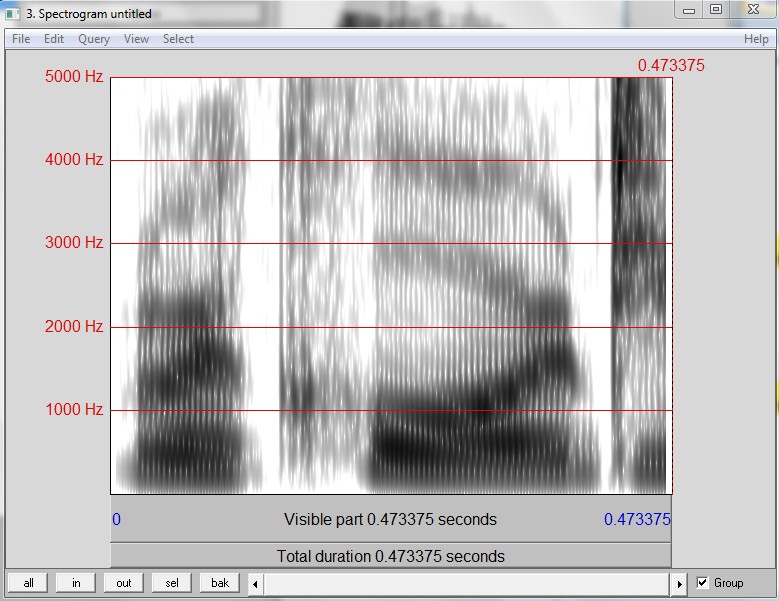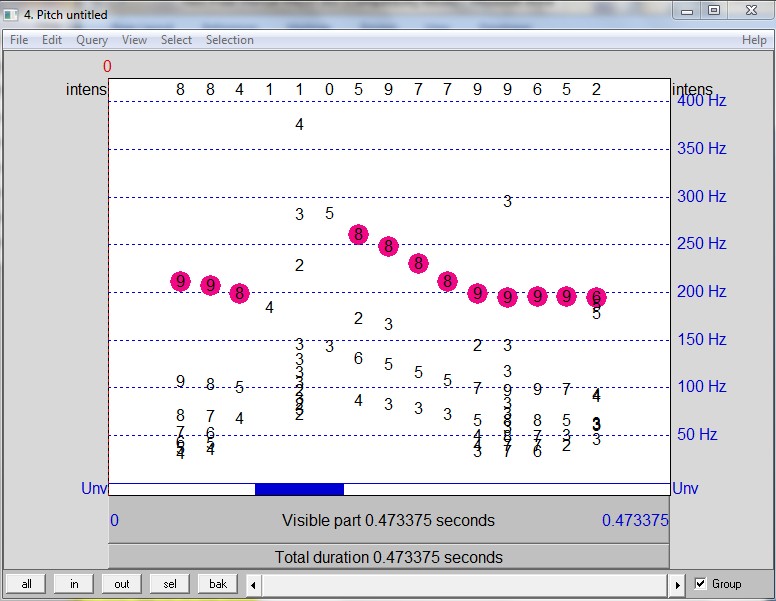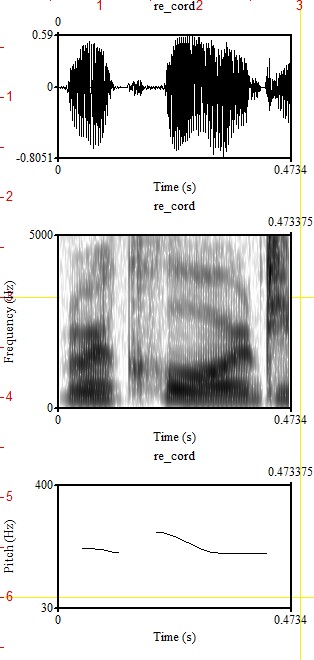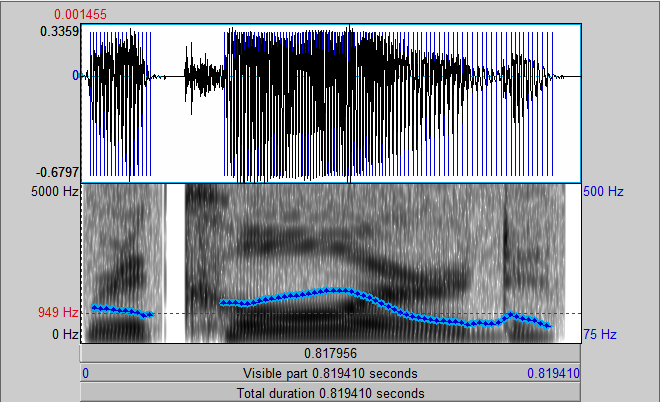In this chapter, we will discuss the application of Praat in the analysis of the word stress and intonation. Both of stress and intonation belong to the suprasegmental features. There are two kinds of stress: word stress and sentence stress. Word stress is concerned with the stressing of individual words of two or more syllables when they are pronounced in isolation. By intonation we mean the rise and fall of the pitch-change of the voice which take place on the nucleus.
4.2.1. What is lexical stress?
In English we usually find that simple words consisting of two or more syllables have a strong stress on one of these syllables and a weak stress on the remaining syllable or syllables. Stress plays an important role in communication, for it distinguishes different meanings when the stress is put in different positions.
“All stressed syllables in words have one characteristic in common, and that is prominence. Prominence is produced by four main factor:(i) loudness (intensity), (ii) length, (iii) pitch (Fundamental Frequency/F0), (iv) quality. Generally these four factors work together in combination, but experimental work has shown that these factors are not equally important; the strongest effect is produced by pitch, and length is also a powerful factor. Loudness and quality have much less effect” (Roach 2009:74).
Since stress is manifested as rise in pitch, greater intensity (loudness) or greater vowel length, the analysis of stress must include various elements of acoustic analysis, like waveform, spectrogram, and pitch contour. (See Figure 4.1).
Figure 4.1 The waveform, spectrogram, and pitch contour of sound
- at the top, the waveform indicates the greater intensity of the stressed syllable
- in the middle, it shows the higher pitch shown in the pitch track
- at the bottom, the spectrogram indicates the greater length of the stressed syllable
(retrieved from Stonham’s handout: p3, http://stonham.dyndns.org/phonetics/handouts/prosod_hndt.pdf)
4.2.2. Stress analysis in Praat
Since stress is manifested as rise in pitch, greater intensity (loudness) or greater vowel length, the analysis of stress must include various elements of acoustic analysis, like waveform, spectrogram, and pitch contour. You can follow the following standard procedure in Praat to analyze the stress.
- Open the sound file in Praat ("Open" → "read from files…")
- Select the file and click "View and Edit” on the right side
- In the Edit window, select Spectrum → Show spectrogram (the default setting is showing the spectrogram)
and then select "Pitch" → "Show pitch", and you will see the following window Figure 4.2: the pitch analysis is laid over on the spectrogram, but when you export them to the Praat objects list they will be treated as separate objects.
Figure 4.2
- To export different windows, you can go to "Spectrum" and then choose "Extract visible spectrogram", then a new file will appear in your Praat objects list as 'Spectrogram untitled' in Figure 4.3.
Figure 4.3
- Then go to "Pitch" and choose "Extract visible pitch contour", and then a new file will appear in your Praat objects list as 'Pitch untitled'as shown in Figure 4.4.
Figure 4.4
- You can also draw the graphics of the waveform by selecting "File" → "draw visible sound".
- You can also draw the graphics of pitch track by selecting "Pitch" → "draw visible pitch contour".
- You can also draw the graphics of the spectrogram by selecting "Spectrogram" → "paint visible spectrogram".
Please see the output in Figure 4.5, which shows waveform, pitch track, and spectrogram.
Figure 4. 5
See details of drawing and painting in Praat in 1.3.4
Let’s look at two examples of analysis of lexical stress in Praat:
Example 1
Figure 4.6 Record /rɪˈkɔːd/
Figure 4.7 Pitch contour of reCORD
Example 2
Figure 4. 8 Record /ˈrek.ɔːd/
Figure 4. 9 Pitch contour of REcord
The word "record' is divided into two parts –"re-" and "-cord".
- In the first one, re'cord, the stress is put on the second syllable.
(1). In "re-", the pitch is falling down, while in "-cord", the pitch is rising, especially in the part of vowel.
(2) The stressed syllable is higher than unstressed one. And the duration of the second syllable "-cord" is longer than the first.
- In the second one, the stress is put on the first syllable.
(1) It is obvious that the duration of the first syllable "re-" is much longer than the one in the first example. And the pitch is rising in the first syllable.
(2) in the second syllable, the duration is shorter and the pitch is falling down.
The table below shows this more clearly;
| Pitch (HZ) | Duration(S) | Pitch(HZ) | Duration(S) | ||
| re- | 160 | 0.132 | '-cord | 172 | 0.615 |
| 're- | 230 | 0.240 | -cord | 137 | 0.356 |
Let's look at another two examples:
Example 3
Figure 4.10 Contrast /kənˈtrɑːst/
Figure 4.11 Pitch contour of conTRAST
Example 4
Figure 4.12 Contrast /ˈkɒn.trɑːst/
Figure 4.13 Pitch contour of CONtrast
| Pitch (HZ) | Duration(S) | Pitch(HZ) | Duration(S) | ||
| con- | 129 | 0.193 | '-trast | 125 | 0.567 |
| 'con- | 146 | 0.278 | -trast | 87 | 0.507 |
Hits: 8462












